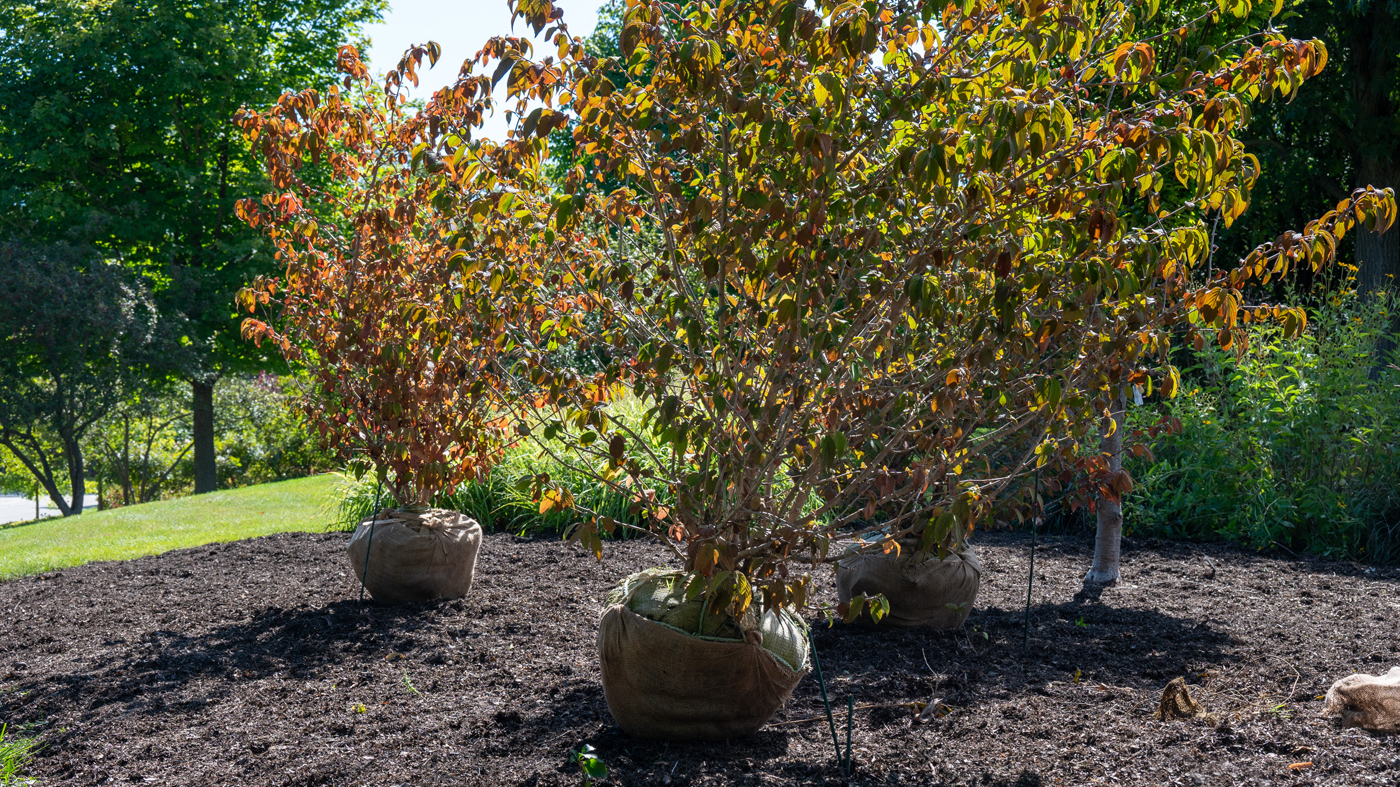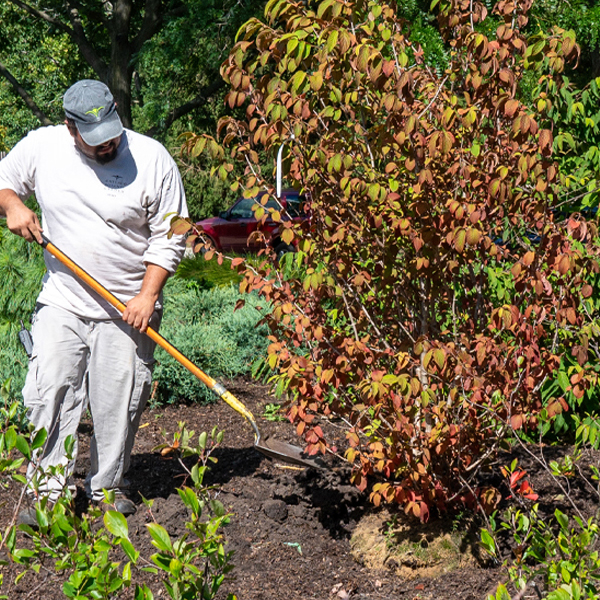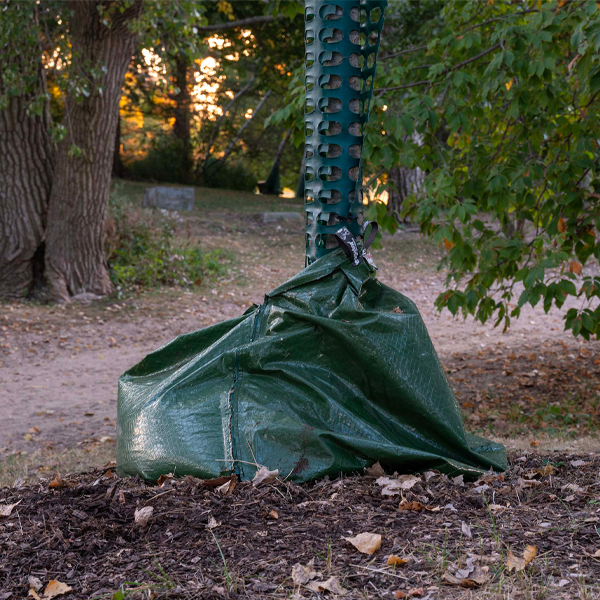

There’s Still Time to Plant Trees!
“The best time to plant a tree is 20 years ago. The second best time is now.”
―Chinese proverb
Warm, sunny days and cool nights have ushered in autumn. Before you put away the shovel and gloves, there’s still time to plant trees. Many garden centers offer sales on their inventory as the season draws to an end. Think about something that will grow large enough to offer shade, or perhaps choose a small, spring-flowering ornamental tree. Now’s the time to shop and plant.
“October is great for planting,” says Tim Johnson, the Garden’s senior director of horticulture. “Any tree that is above ground—typically dug in spring, late summer, or early fall—is fine for planting from my perspective.”
Planting now allows trees and shrubs time to establish good root systems before the soil freezes in winter. Tree roots continue slow growth even when the soil temperature dips to 45 degrees Fahrenheit. The plants will not be stressed by brutal heat and as long as you keep them watered for the next six weeks or so, they will adjust to their new home.
Resources
Did you know that Garden members can borrow books online? Check out the Garden’s Lenhardt Library offerings.
Learn more about proper tree planting methods, as well as mulch tips and avoiding winter burn on evergreens.
Nina Koziol is a garden writer and horticulturist who lives and gardens in Palos Park, Illinois.





